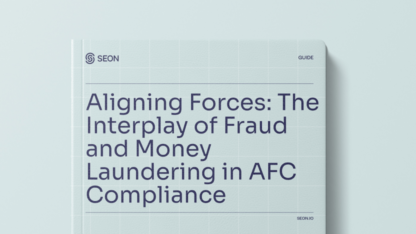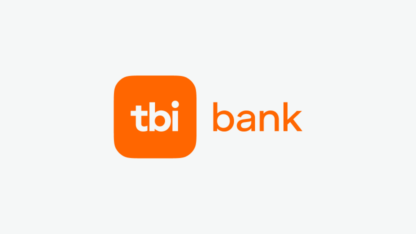Detecting and preventing financial fraud, like a teenager battling hormonal acne, is an ongoing responsibility characterized by constantly moving targets and the potential for huge reputational damage. Even with the most advanced and well-observed preventative hygiene practices, inevitably there will be unsightly pain points that appear in unexpected places. It’s up to you to establish reactive measures to handle them.
So what is the best approach to keeping the face of your company unblemished by fraud, regulatory fines, and public embarrassment? SEON provides these insights, as well as a fast-acting applicable solution to avoid pizza face.
What Is Financial Fraud Detection?
Financial fraud detection refers to protocols set in place to mitigate the damage caused by fraudulent activity taking place within financial service providers. This can include credit card fraud, money laundering, identity theft, and other forms of payment fraud.
This protocol is highly susceptible to the changing requirements of payment service regulators (PSRs) as their definitions of best financial safety practices evolve. These changes are often granular, wrapping themselves around emerging issues within the fraud and financial landscape. Regardless, those changes will fall within the established framework that includes a robust digital and infrastructural risk management system.
Failure to implement a working risk strategy will lead to damage to any organization, not only in the form of losses to fraudsters but also from regulators imposing noncompliance fines. Plus the associated reputational damage. Staying educated on existing fraud risks, as well as the regulations around them, is key to building a best-practice financial fraud detection framework.
Most Common Types of Financial Fraud
Financial fraud can broadly be thought of as any criminal activity relating to payment processes, or any fraud targeting financial institutions in particular, such as banks, lending institutions, crypto exchanges, and fintechs of all kinds. Sadly, this threat does not manifest itself as a single, easy-to-tackle issue. Rather, there is a whole spectrum of risks that need to be addressed.
Though fraudsters and their malicious ploys are always evolving, the same general risks should be monitored for, regardless of how their façades may change. They include:
- money laundering
- embezzlement
- insider trading
- identity theft/synthetic identity theft
- terrorism financing
- credit card fraud
- authorized push payments (APP)
- insurance fraud
For a deeper dive into the pervasive types of financial fraud plaguing the money service ecosystem, check out our in-depth article on types of financial crime.
How Fraud Impacts Today’s Financial Organizations
In 2023, businesses stand to lose over $48 billion globally as a result of successful fraudsters, according to a report published by Juniper Research. Fraud will, according to the Association of Certified Fraud Examiners, cost US businesses up to 5% of gross revenues this year.
This represents the losses that manage to trickle through existing cybersecurity protocols but does not describe the entire impact that fraud has on a company. To get a top-down view of how fraud reshapes an organization beyond the lost revenue, consider:
- Legal and regulatory costs: Allowing fraud to continue can lead to regulators issuing huge fines, especially when customer safety and the overall safety of the financial landscape are jeopardized. These fines can represent huge dents in liquidity.
- Increased scrutiny: When regulators look more closely at your organization, failure to implement best practices for adhering to regulations can lead not just to fines but to costly changes. Part of the impact of fraud is the need for investment into resources, such as a well-outfitted fraud team and a best-in-class fraud prevention platform.
- Reputational damage: Being involved in a noncompliance scandal or a scaled fraud attack will inevitably erode public trust in your financial organization, from both a customer and investor standpoint. Bottom lines will be negatively affected by the resulting loss of customers if they feel your environment is an unsafe place to do business.
- Disruption to business as usual: Embroilment in a regulatory legal battle, or suddenly diverting huge amounts of resources to fraud-fighting or recovering accounts from business email compromise (BEC) disrupts usual business workflows. Slowdowns in addressing infrastructural issues or customer service will potentially lead to customer churn and an overall decrease in productivity.
These potential disruptions will have more trickle-down effects throughout the company. Teams like HR, marketing, and operations will have to consider how to bolster both fraud prevention and image control, compounding the cost of letting fraudsters run amok in your domain.
Partner with SEON to reduce fraud rates in your business with real-time data enrichment, whitebox machine learning, and advanced APIs.
Ask an Expert
How to Detect Financial Fraud
Fighting against the negative impact of financial fraud requires both a proactive and reactive framework, as well as regular due diligence. Building such a framework will reach across departments and necessitate a best-in-class technological solution that will complement a resourceful (and well-resourced) fraud team.
Though this framework should cover all business channels, it may be easiest to think of it with two main facets: technological and infrastructural.
Financial Fraud Detection Using Machine Learning
A comprehensive technological fraud mitigation framework should include these steps:
- Data collection: To satisfy existing know your customer (KYC) and anti-money laundering (AML) mandates, regulated industries should gather any personal information necessary to generate trustworthy user profiles. Of course, you must gather transactional data that is used to detect actual fraud as well.
- Data processing: In order to utilize fraud management software, data must first be cleaned and labeled, meaning that any input data should be ready for the software to process it. This processing should include the labeling of transactions that resulted in fraud. Some solutions require more or less data processing depending on the use case. CatBoost, which SEON uses, allows for a minimal amount of preprocessing.
- Machine learning (ML) model selection: Depending on the vertical and nature of the data, some machine learning models – and the software solution that contains them – might be better suited than others. For the financial industry, the best solutions typically employ XGBoost, LightGBM, or CatBoost.
- ML model training: Cleaned and processed data should then be used to train the machine learning algorithm. In this stage, the chosen software solution will look at both legitimate and fraudulent transactions, looking for patterns that emerge among both. This is to develop sensitive triggers that point out potential fraudsters before they can cause any damage.
- Deployment: After being trained, the software should be integrated in a way that allows relevant team members to access and monitor the activity. This will include implementing risk thresholds and alerts to conduct manual reviews when necessary. Integrations into existing infrastructure, such as Slack or other customer service software, are crucial at the deployment stage.
- Ongoing monitoring: For the sake of maintaining a safe environment and staying on top of compliance, the chosen software platform should allow for easy updates to risk thresholds, as well as the ability to manually flag transactions to better inform the ML algorithms moving forward.
Financial Fraud Detection Infrastructure
Decreasing the risks that financial fraud poses to a company is, unfortunately, not a task that can be left to automated software alone. Indeed, multiple tiers of any organization should include fraud detection responsibilities, at least on the awareness level.
From an infrastructural standpoint, your framework should evolve to include the following, if it doesn’t already have this shape:
- Dedicated fraud team: As opposed to a general cybersecurity task force, fraud detection is a process that is involved to the point that it is crucial to have risk mitigation professionals with experience in large data analytics. This team should be equipped with a competent software solution, as well as any other resources needed, such as a dedicated AML compliance officer and accessible communication channels to relevant teams.
- Strong policies: From the top level down, an organization must decide where its risk appetite lies. Different verticals may necessitate a greater willingness to accept risk on the road to revenue. Regardless, you must carefully determine these thresholds to inform risk policies. These policies should also include workflows for investigation and reporting to authorities, as well as the specific roles and responsibilities during those processes.
- Increase organizational awareness: You should inform all levels of the company of the transactional fraud prevention measures taking place and of the risks employees might be susceptible to or may pose themselves to the organization. Stopping phishing and BEC, which can become massive data leaks or worse, starts by keeping employees aware of pervasive threats and scam tactics.
- Encourage suspicious activity reporting: Suspicious Activity Reports (SARs) are an important part of AML practices. They extend not only to the financial transactions conducted by customers, but also to the potential for insider trading, embezzlement, and bribery. Though potentially sensitive, you should encourage staff members to report such activities regardless of where they fall in the organization.
- Partnerships: Apart from developing a good relationship with your chosen fraud prevention provider, vetting potential business partners is a huge part of security. Know your business (KYB) mandates require this as a part of due diligence. Choosing security-minded business partners with their own robust fraud prevention frameworks will help close up revenue leaks sprung by taking on untrustworthy affiliates.
- Continuous monitoring: The above processes, once established, need to be refreshed and updated, not only in terms of your documentation but also staff awareness. As best practices evolve and new threats emerge, the established protocols will need to evolve alongside them – and training sessions that contain this should be persistent.
Automated Fraud Detection for Financial Institutions
Together, these two frameworks give any organization the most automation achievable, cutting down on resources invested and lost. Notably, fraud detection systems that have compliance as the highest priority – on top of return on investment (ROI), of course – will never be fully automatable, as a risk-based approach to financial fraud prevention will always require a certain degree of human oversight and individual responsibility.
Once you have implemented both the technological and infrastructural frameworks, there are some important, more granular financial risk management tools that will go a long way to optimizing risk management workflows to express the most automation. These tools – which are all part of SEON’s platform – address the most common moments where a fraud team member has to step into the process for manual oversight. By design, they minimize both the volume of those moments as well as the required time to handle each of them:
- Data cleansing allows missing and categorical (as opposed to numerical) data to be assessed during the course of the machine learning training process. SEON utilizes the CatBoost ML algorithm, which cuts down significantly on resources devoted to data preprocessing.
- Sanctions lists lookups provide risk teams with confidence that their clients (or partners) are not exposing them to sanction noncompliance. Having a single point of information also cuts down on time spent researching the risk of an individual user.
- High-risk country list integration into a risk scoring system cuts down on manual review time further. Depending on individual risk thresholds, high-risk users can be set to automatically decline or automatically trigger a review. Different organizations may find time and resources saved in either case, either declining more and reviewing less, or else reviewing more and handling less fraud.
- An easily interpreted customer risk dashboard can cut down significantly on manual review time, particularly as part of a scaled fraud team.
In terms of ROI, integrating these tools into existing workflows is the best approach to developing financial fraud detection with the maximum amount of automation, while also minimizing resource use.
What Are The Greatest Risks for Financial Institutions?
As the cybersecurity and fraud prevention sector gets better at preventing the scams that damaged bottom lines one tech generation ago, new, unseen threats now pose a greater relative risk. As fraud prevention technology develops over here, fraudsters develop new technologies over there. But where? And what do those scams look like?
Thankfully, some of the technologically scary fraudsters’ tools, such as video deepfakes, have proven to be easily fallible (by, say, requesting a person turn their head to the side). In response, many fraudsters have returned to the tried-and-true methods of social engineering and phishing. Others utilize the increasing accessibility of online services to concoct elaborate malicious setups, some of which comprise fraud-as-a-service.
Modern businesses with a priority on compliance and risk mitigation should be aware of these new forms of fraud, and of the old ones with a new groove.
Charity Fraud
As tools to acquire and build a legitimate-looking online outfit are increasingly accessible, fake partners set up for fraud are on the rise. Often flying under the radar but exposing you to regulatory scrutiny, lost funds, and reputational humiliation, are fraudulent charities. These will often have a name that is just left of recognizable, so that you may not even notice that you’ve never heard of them. To vet a charity partner that approaches you, consider:
- looking up the charity’s local registration data for legitimacy
- researching its mission on its website, and making sure the site is certified by looking for the “locked” symbol in your browser’s navigation bar
- confirming any third-party endorsements and making sure those partners are real – recognizable enterprises are a good sign
- requesting the charity’s documentation, such as its tax-exemption status
In general, whether the potential partner is a charity or any other form of business, maintain a healthy skepticism when scrutinizing affiliates who approach you. Be particularly wary when you find yourself face-to-face with high-pressure tactics, along with the usual caution that any good fraud team member should have.
Modern Phishing
Fraudsters have realized that the best way to compromise a valuable data pool or drain an account of funds is by stealing login credentials. As fraud prevention measures have become better at singling out the technological tools fraudsters commonly use, the old-fashioned knives have come out – sharpened.
Keeping your staff and customers aware of warning signs associated with scam messages appearing in emails, texts, or other messaging services, as well as fostering a healthy skepticism of relinquishing personal data, is paramount to corporate safety. This should go all the way up the chain, as CEO scams – either posing as or engineering scaled account takeover (ATO) attempts on CEO accounts – are on the rise.
Account takeover attacks will always be one of the most insidious threats for both staff and customers. Naturally, your business reputation is at risk if a significant number of customers fall pretty to ATO and have their credentials compromised and their accounts drained.
Some organizations may also feel responsible for recouping those customers’ losses. An even higher potential for damage, though, is through business email compromise, which could lead to a massive data leak that, in turn, leads to huge amounts of compromised accounts across multiple domains – a sad phenomenon that consistently draws the attention of regulators.
To help prevent this, choose a fraud prevention solution that addresses ATO easily, such as SEON. That solution should be able to detect abnormal behavior from within an account in comparison to previous behavior, while also detecting anomalous logins in terms of location, device, or the appearance of potentially malicious tools like VPNs and data center proxies.
Improve your risk management with SEON’s real-time data enrichment tools, behavioral checks, and deep device fingerprinting analysis.
Ask an Expert
How to Choose the Best Tool for Your Business
For financial institutions and all verticals within the regulation perimeter, choosing the best banking fraud detection software depends on how well you know your company goals. As discussed, establishing responsibilities and risk appetites is crucial to streamlining your internal risk processes. Implementation of the aforementioned frameworks, if they are observed carefully, should solidify these so that business can flow smoothly and safely.
How SEON Helps with Financial Fraud Detection
SEON’s end-to-end fraud prevention platform addresses the entirety of the technological framework described above. Equipping your fraud team with SEON gives it all the tools to not only reduce fraud by up to 99% but also to cut down on the resources devoted to human oversight of the risk management process, from data preparation to manual review.
By leveraging a comprehensive device fingerprint, alongside other hard-to-spoof identifiers like password hashes, IP location, digital footprint, and transaction behavior, SEON’s machine learning algorithms help catch account takeovers, multi-account abusers, and sanctioned entities.
Each instance of SEON comes with industry-trained blackbox rules out-of-the-box, while the explainable whitebox algorithm gets trained on your prepared data to be specific to your organization. In addition to the default rules that the platform comes with – designed by our fraud experts to address common fraud tactics – you can easily create and edit custom rules within the rule editor, then deploy them instantly.
In terms of compliance, SEON gives fraud teams confidence under the watchful eye of regulators. Mandates concerned with KYC, customer due diligence, and AML are easily satisfied with SEON, provided the correct infrastructural protocols are in place. The lists SEON references for sanctions, crime, and the countering of funding of terrorists are constantly updated, with more jurisdictions constantly being added.
Implementing SEON as part of a holistic approach to preventing financial fraud constitutes your due diligence to satisfy lawmakers and provide your customers with a safe place to do business. Think of it as a topical cream that prevents the vast majority of unsightly red breakouts, but also salves those few spots that do emerge. It can even pop them when necessary, provided there are enough skillful hands to do so.








